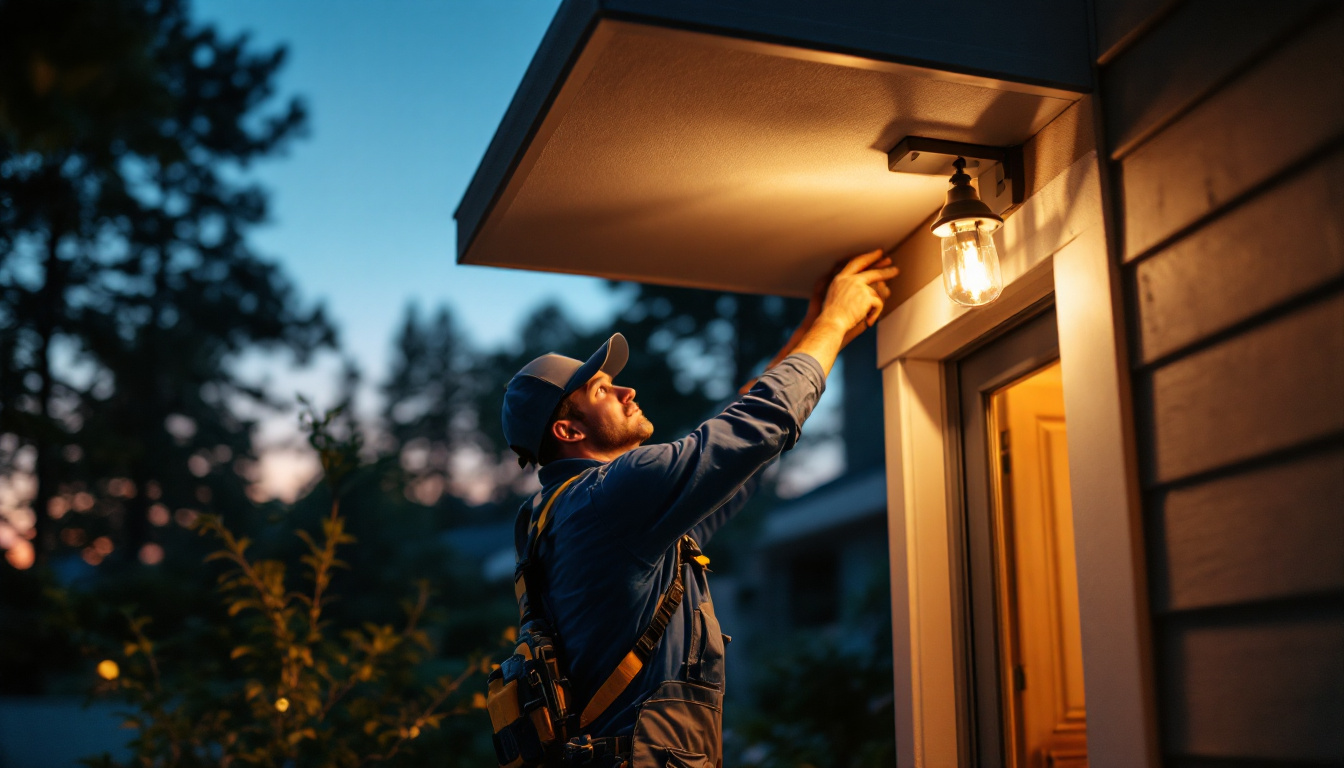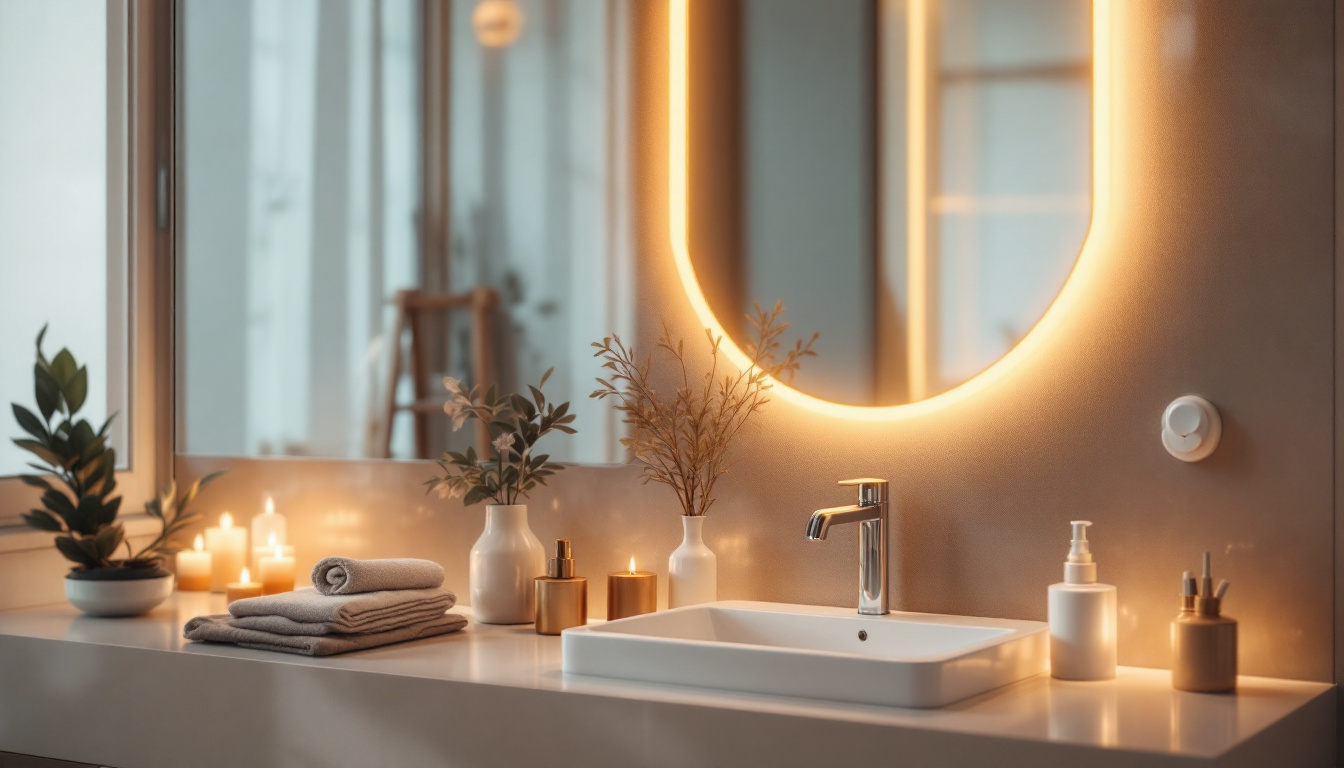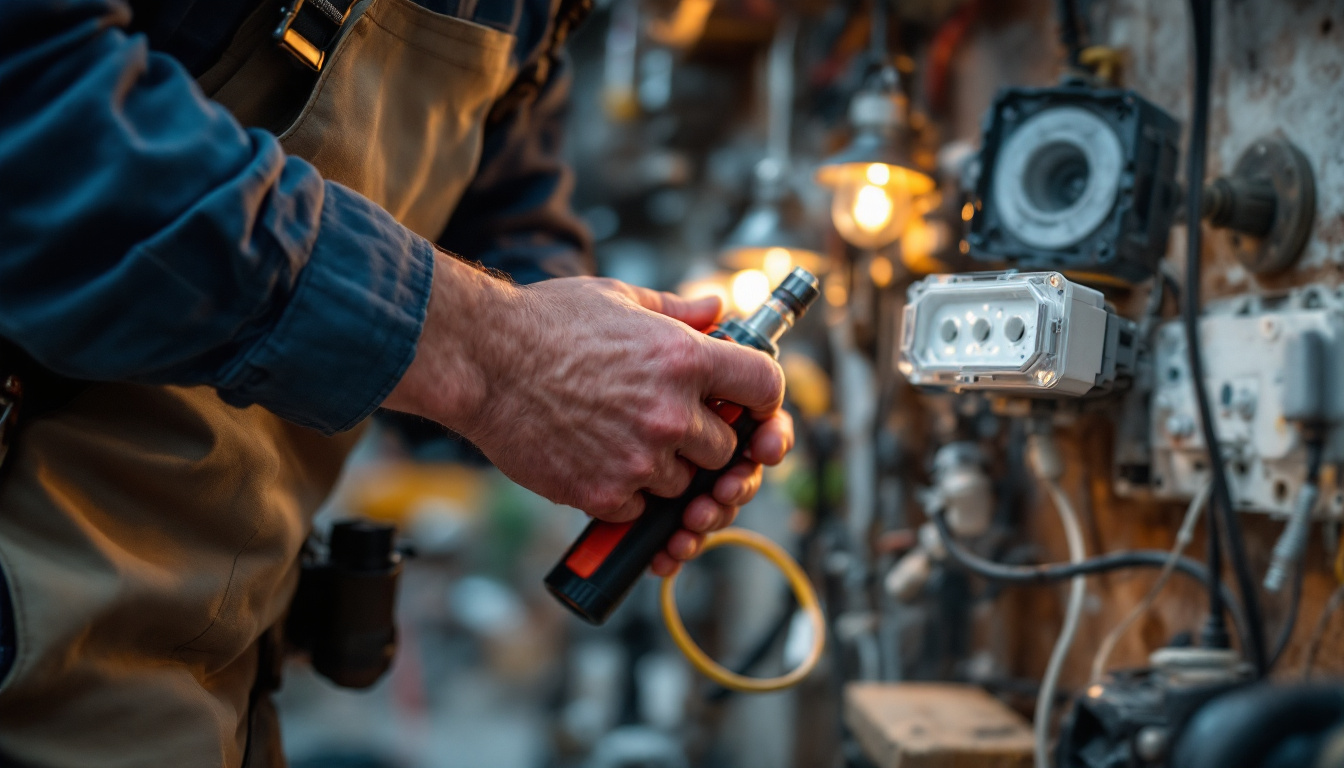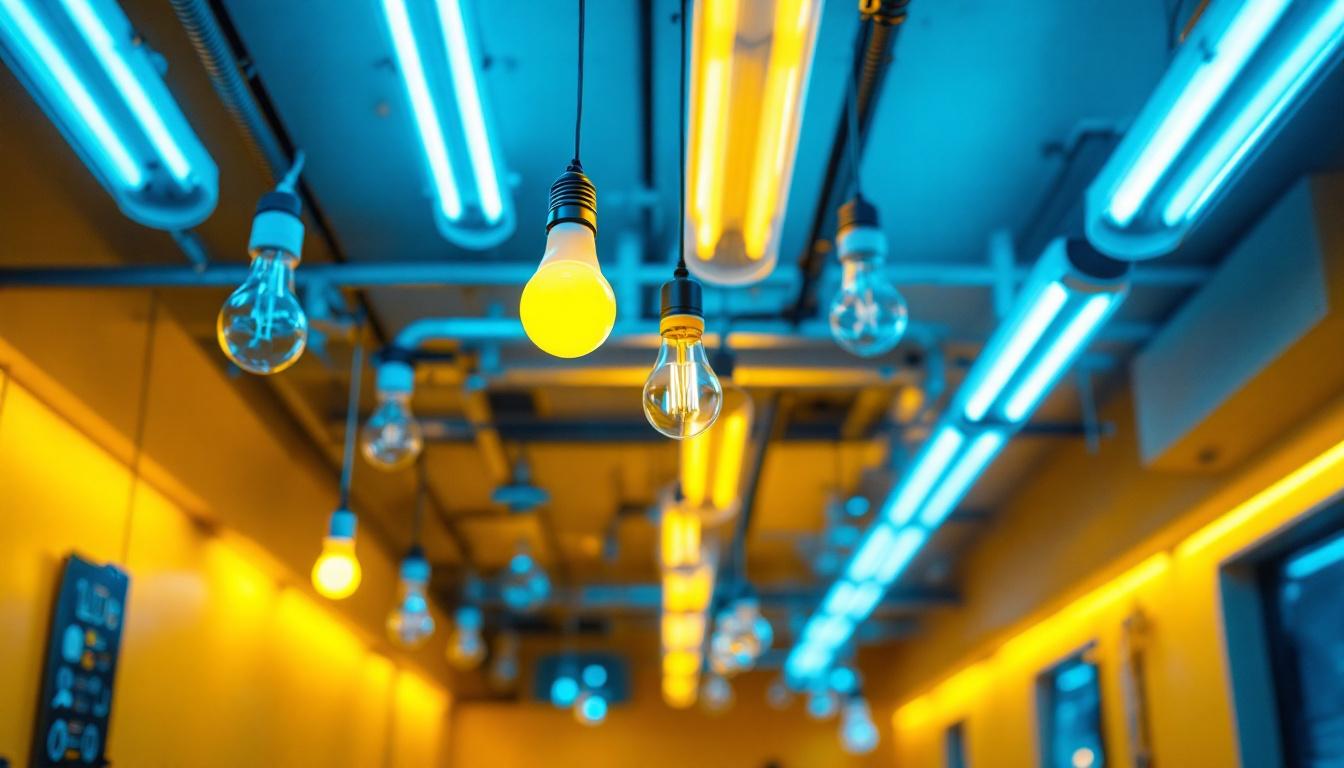
Lighting plays a crucial role in enhancing the aesthetics and functionality of outdoor spaces. For lighting contractors, understanding the nuances of dusk to dawn lighting is essential to meet client expectations and ensure safety. This article explores proven methods that can help lighting contractors excel in their projects, from selecting the right fixtures to implementing effective installation techniques.
Dusk to dawn lighting refers to outdoor lighting systems that automatically turn on at sunset and off at sunrise. This technology is particularly useful for enhancing security, safety, and visibility in residential and commercial settings. By utilizing sensors, these lighting systems provide convenience and energy efficiency, making them a popular choice among clients.
One of the primary benefits of dusk to dawn lighting is the enhanced security it offers. Well-lit areas deter potential intruders and provide a sense of safety for homeowners and businesses alike. Additionally, these systems can significantly reduce energy consumption, as they only operate when needed. This not only lowers electricity bills but also contributes to environmental sustainability.
Moreover, dusk to dawn lights can improve the aesthetic appeal of outdoor spaces. By highlighting architectural features, landscaping, and pathways, these lights create inviting atmospheres that enhance the overall experience of the space. For contractors, understanding these benefits can help in presenting compelling proposals to potential clients.
In addition to security and aesthetics, dusk to dawn lighting systems can also play a vital role in enhancing outdoor activities. For instance, families can enjoy their backyards well into the evening hours, whether it’s for barbecues, gatherings, or simply relaxing under the stars. This extended usability of outdoor spaces encourages a more active lifestyle and fosters community engagement, making neighborhoods feel more connected and vibrant. Furthermore, many modern dusk to dawn lights come equipped with smart technology, allowing users to control them remotely via smartphones or home automation systems, adding another layer of convenience.
Another noteworthy aspect of dusk to dawn lighting is its adaptability to various environments. From residential gardens to commercial parking lots, these systems can be tailored to suit specific needs and preferences. For instance, solar-powered dusk to dawn lights are an excellent option for areas where electricity access is limited or for those looking to minimize their carbon footprint. These solar lights harness energy during the day, ensuring that they are ready to illuminate the night without relying on traditional power sources. This versatility not only makes dusk to dawn lighting a practical choice but also encourages innovative designs that can seamlessly blend with a variety of outdoor aesthetics.
Choosing the appropriate fixtures is vital for the success of any dusk to dawn lighting project. Various types of fixtures are available, each with its own advantages and applications. Factors such as brightness, design, and energy efficiency should be considered when making selections.
There are several types of fixtures suitable for dusk to dawn lighting, including wall-mounted lights, post lights, and floodlights. Wall-mounted lights are ideal for illuminating entryways and pathways, while post lights can enhance driveways and gardens. Floodlights, on the other hand, provide powerful illumination for larger areas, making them perfect for commercial properties.
LED fixtures have gained popularity due to their energy efficiency and longevity. Unlike traditional incandescent bulbs, LEDs consume significantly less power and have a lifespan that can exceed 25,000 hours. This makes them a cost-effective choice for both contractors and clients.
When selecting fixtures, it is essential to consider light output and color temperature. Measured in lumens, light output determines how bright a fixture will be. A higher lumen count is necessary for larger areas or spaces that require enhanced visibility. Conversely, softer lighting may be more appropriate for residential settings, where ambiance is a priority.
Color temperature, measured in Kelvin (K), affects the ambiance created by the lighting. Warmer tones (2700K-3000K) create a cozy atmosphere, while cooler tones (4000K-5000K) provide a more modern and vibrant feel. Understanding the desired ambiance can help contractors recommend the right fixtures to clients.
Proper installation techniques are crucial for ensuring the effectiveness and longevity of dusk to dawn lighting systems. A well-executed installation not only enhances the performance of the fixtures but also minimizes maintenance issues in the future.
Before installation, planning the layout is essential. Contractors should assess the area to determine the optimal placement of fixtures. Key considerations include the height of the fixtures, spacing between lights, and the specific areas that require illumination. A well-thought-out layout can significantly improve the overall effectiveness of the lighting system.
Using software tools or manual sketches can aid in visualizing the layout. This can help contractors present their ideas to clients and make necessary adjustments based on feedback. Additionally, considering factors such as landscaping and architectural features can enhance the overall design.
Electrical considerations are paramount during installation. Ensuring that the wiring is correctly installed and meets local codes is essential for safety and functionality. Contractors should also consider using weatherproof fixtures and components to withstand outdoor conditions.
Incorporating timers and sensors can enhance the functionality of dusk to dawn lighting systems. Photocells, for example, automatically detect ambient light levels and adjust the lighting accordingly. This not only adds convenience but also optimizes energy usage.
Regular maintenance is vital for the longevity and performance of dusk to dawn lighting systems. Contractors should educate clients on the importance of routine checks and provide them with a maintenance schedule to follow.
Routine checks should include inspecting the fixtures for any signs of wear or damage, cleaning the lenses to ensure optimal light output, and testing the sensors to confirm they are functioning correctly. Additionally, checking the wiring for any signs of corrosion or wear can prevent potential electrical issues.
Contractors can also offer maintenance services as an added value to clients. Providing a maintenance contract can ensure that the lighting systems remain in optimal condition while generating recurring revenue for the contractor.
Despite regular maintenance, issues may still arise. Common problems include flickering lights, lights not turning on, or lights turning on during the day. Contractors should be prepared to troubleshoot these issues effectively.
For flickering lights, checking the bulb and socket connection is a good starting point. If the lights do not turn on, inspecting the photocell and ensuring it is not obstructed by dirt or debris is essential. For lights turning on during the day, adjusting the sensitivity of the photocell may resolve the issue.
Effective communication with clients is key to a successful project. Educating clients about the benefits and operation of dusk to dawn lighting systems can enhance their satisfaction and trust in the contractor.
Clients may not be familiar with how dusk to dawn lighting systems work. Taking the time to explain the technology behind these systems, including the role of sensors and timers, can help clients appreciate the value of their investment. Providing demonstrations or visual aids can further enhance understanding.
Additionally, discussing energy savings and the environmental benefits of using energy-efficient fixtures can resonate well with clients who prioritize sustainability. This knowledge can empower clients to make informed decisions about their lighting needs.
Setting realistic expectations is crucial for client satisfaction. Contractors should communicate the timeline for the project, potential challenges, and the expected outcomes. This transparency helps build trust and ensures that clients are not left in the dark about the process.
Furthermore, discussing maintenance requirements and what clients can do to prolong the lifespan of their lighting systems can enhance their overall experience. Providing written instructions or resources can serve as a helpful reference for clients after the installation is complete.
The lighting industry is continually evolving, with new technologies and trends emerging regularly. Staying updated on these innovations can give contractors a competitive edge and enhance their service offerings.
Smart lighting solutions are becoming increasingly popular in both residential and commercial settings. These systems allow users to control their lighting remotely through smartphones or smart home devices. Features such as scheduling, dimming, and color changing can enhance the versatility of dusk to dawn lighting systems.
Integrating smart technology can also appeal to tech-savvy clients who prioritize convenience and customization. Contractors should familiarize themselves with various smart lighting products and be prepared to offer these options to clients.
With a growing emphasis on sustainability, contractors should consider incorporating eco-friendly practices into their projects. This may include using solar-powered fixtures, which harness energy from the sun and reduce reliance on traditional power sources. Additionally, promoting energy-efficient products can align with clients’ values and enhance the contractor’s reputation.
Educating clients about the benefits of sustainable lighting solutions can also open up new opportunities for contractors. As more individuals and businesses seek to reduce their carbon footprint, offering eco-friendly options can set contractors apart in a competitive market.
For lighting contractors, mastering dusk to dawn lighting is essential for delivering high-quality service and meeting client expectations. By understanding the benefits, selecting the right fixtures, implementing effective installation techniques, and maintaining open communication with clients, contractors can excel in their projects.
Staying informed about innovative trends and sustainable practices will further enhance a contractor’s offerings, ensuring they remain competitive in a rapidly evolving industry. Ultimately, a commitment to quality and customer satisfaction will lead to long-term success in the lighting contracting business.
Ready to elevate your lighting projects with the best dusk to dawn solutions? Look no further than LumenWholesale, where we provide contractors with top-quality, spec-grade lighting products at unbeatable wholesale prices. Our extensive selection is designed to meet the highest industry standards, ensuring you get reliable, high-performance lighting for every project. Plus, with free shipping on bulk orders, you can enjoy premium lighting at the best value — without hidden fees or compromises. Don’t let middleman markups dim your potential; choose LumenWholesale for the perfect blend of quality, affordability, and convenience. Wholesale Lighting at the Best Value is just a click away.

Discover how light fittings for low ceilings are transforming modern lighting solutions.

Discover the essential insights lighting contractors need to know about LED mirrors.

Discover how weatherproof wire connectors can enhance your lighting projects and boost your profits.

Discover the essential role of fluorescent bulbs in modern lighting installations.